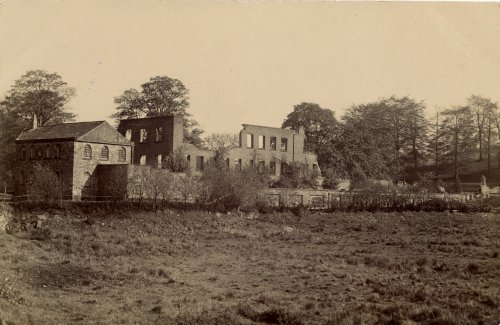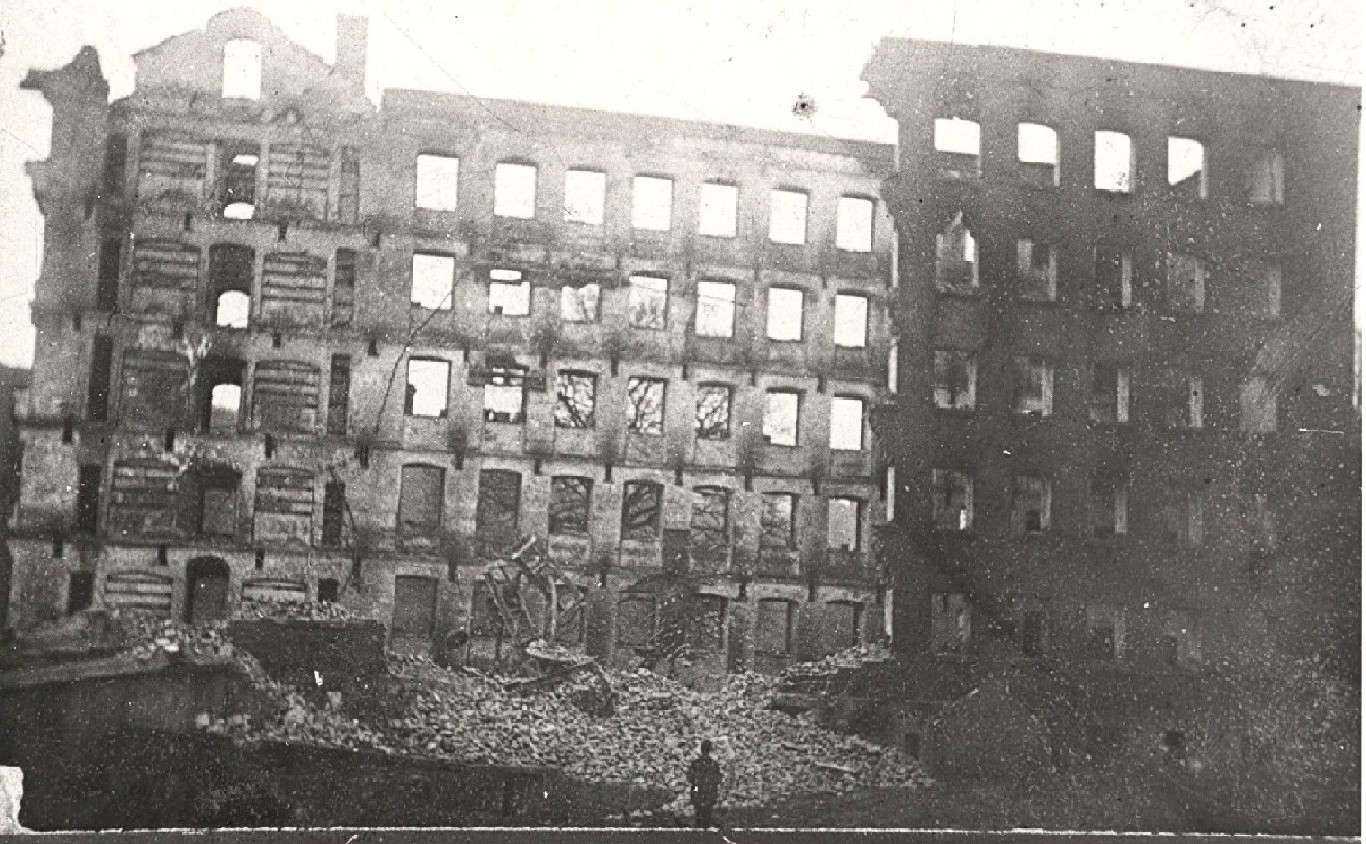Newspaper article from Cheshire County News 19th November 1892.
Great Mill Fire, Marple : A Gigantic Blaze. The Building Completely Gutted. A dismal Outlook for the Villagers.
 Mill post-fire, rear view (Corn mill on left)
Mill post-fire, rear view (Corn mill on left)
Early on Thursday morning a most destructive fire broke out in the Mellor Mill, Marple by which in about two hours the main structure was entirely destroyed. Spinning and doubling were carried on at the mill, which afforded employment for about 200 workpeople.
The premises were six storeys high with side wings filled with new machinery which was only partially insured. The mill was built in 1790 and was of historic interest. Shortly after two o?clock in the morning a cottager who resides in close proximity to the mill noticed from her bedroom window flames issuing from the centre of the factory. She immediately ran to the village and raised the alarm. The shouts of "Fire" were soon resounding throughout the whole neighbourhood, and an hour later there was a general stampede of the villagers en route for the scene of the conflagration. On their arrival at the mill a sight, terrible in its magnificence, met their view.
A dense fog enveloped the whole district, and it was only at the distance of a few hundred yards and the lurid glare penetrated the dense atmosphere. All was excitement, and it was palpable that the premises could not be saved, the flames having by this time obtained a complete mastery of the building. Immense tongues of fire were belching forth from the windows. Higher and higher they leaped and blazed, the building and its environs being encircled with a halo of crimson light. Still the fire fiend raged unchecked. A message was despatched to Marple and Compstall fire brigade, but they arrived too late to be of any practical service. The spectacle when the fire was at its height was a splendid but awe inspiring one. The entire mass of building, which cover half an acre in area was one gigantic blaze, brilliantly illuminating the district huge columns of smoke ascended into the heavens and hung in the form of a dense canopy over the burning building. One by one the machinery clanged together like the roar of artillery. Then the roof with one gigantic swoop collapsed, falling through the practically demolished building with a thunderous smash, amidst the shrieks of the bystanders, for all the village was now awake. The mill girls with their shawls over their heads, the children clinging, terrified to their mothers dresses, and men who had been striving to render what little assistance their was in their power, were all eagerly gazing at the burning pile.
 Mill post-fire, front view
Mill post-fire, front view
These efforts of the men were, however, of little use. Two engines were now in attendance and a number of box pipes were got to work, a splendid supply of water being at hand, but the puny liquid sprays did not in the slightest degree abate the fury of the fierce fire. Still the men continued to work like galley slaves, evidently with the determination that no effort on their part should be wanting to minimise the loss which inevitably ensued. They worked with pertinacity and indomitable perseverance which was most praiseworthy, but within a few hours from the detection of the fire Mellor Mill was a complete wreck. At eight o'clock on Thursday morning nothing remained of the magnificent pile of buildings but the towering walls, standing gaunt and bare. Numberless bundles of cotton in its woolly state were smouldering slowly away, making the air unpleasant with their sickly odour. Scores of willing hands, when the flames had almost died out, were busily engaged in carrying away those bundles which had not been entirely destroyed, to separate the burning from the uninjured material. Fortunately, the yarn cellar was not reached by the fire, and it is believed that about 750 bundles are saved. This however, is nothing comparatively to the immense damage that has been wrought.

